Ethiopian Yega Chefe Coffee characteristic taste description of Yega Chevy Coffee
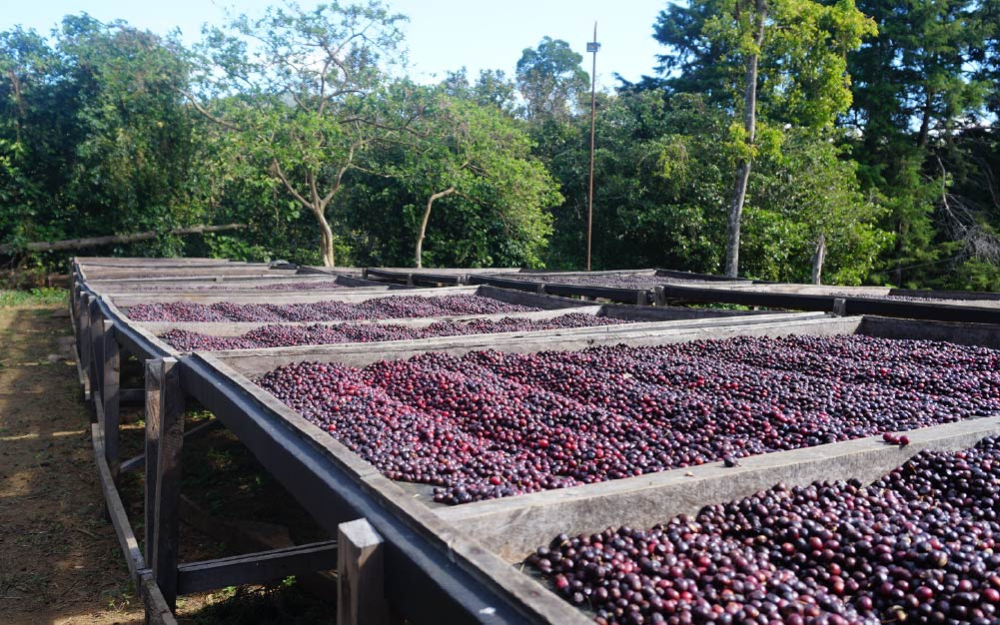
Coffee originated in Ethiopia in Africa. In this ancient land, it has produced magical fruits that have affected the world so far. At a time when people in many parts of the world do not know what coffee is, the Ethiopian people are already growing and drinking coffee. If you are a lover of boutique coffee, you must have heard of Yega Chuefei Coffee, whose fresh and lively flower and fruit flavor is unforgettable. Qianjie Coffee is one of the loyal fans of Yega Xuefei.
Ethiopian coffee planting model
As we all know, coffee, as a tropical crop, needs to be grown in a cool and comfortable place without Frosts Descent. Coffee trees are mainly planted between latitude 25 °south and latitude 25 °north around the equator, an area known as the "coffee belt". There are about 70 coffee producing countries located on the coffee belt, which can be roughly divided into three major coffee producing areas: Africa, Latin America and Asia.
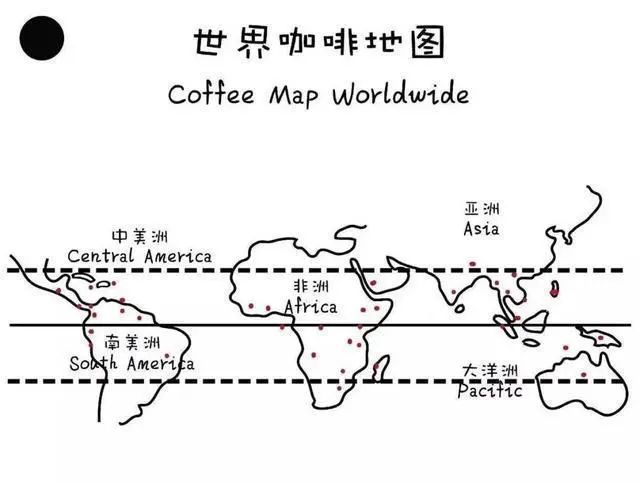
As the birthplace of coffee beans, Africa plays an important role in the whole coffee industry. The coffee here generally has a strong aroma and charming acidity, and the most famous coffee producing countries are Ethiopia and Kenya. Coffee cultivation in Ethiopia is mainly in the western and southern regions, with small farmers accounting for 90% of the total cultivation, and nearly 1.2 million of small farmers make a living by growing coffee. The local coffee production system is divided into four types: forest coffee, semi-forest coffee, pastoral coffee and large plantations, of which pastoral coffee is the most common. Due to the small output of coffee planted by small farmers, there will be local coffee cooperatives and processing plants, which are mainly responsible for the handling of raw coffee beans in the region. Farmers send their harvested coffee beans to a nearby treatment plant built on water for unified treatment, which will then be sold in the name of the treatment plant. The Yejashafi producing area is one of them.
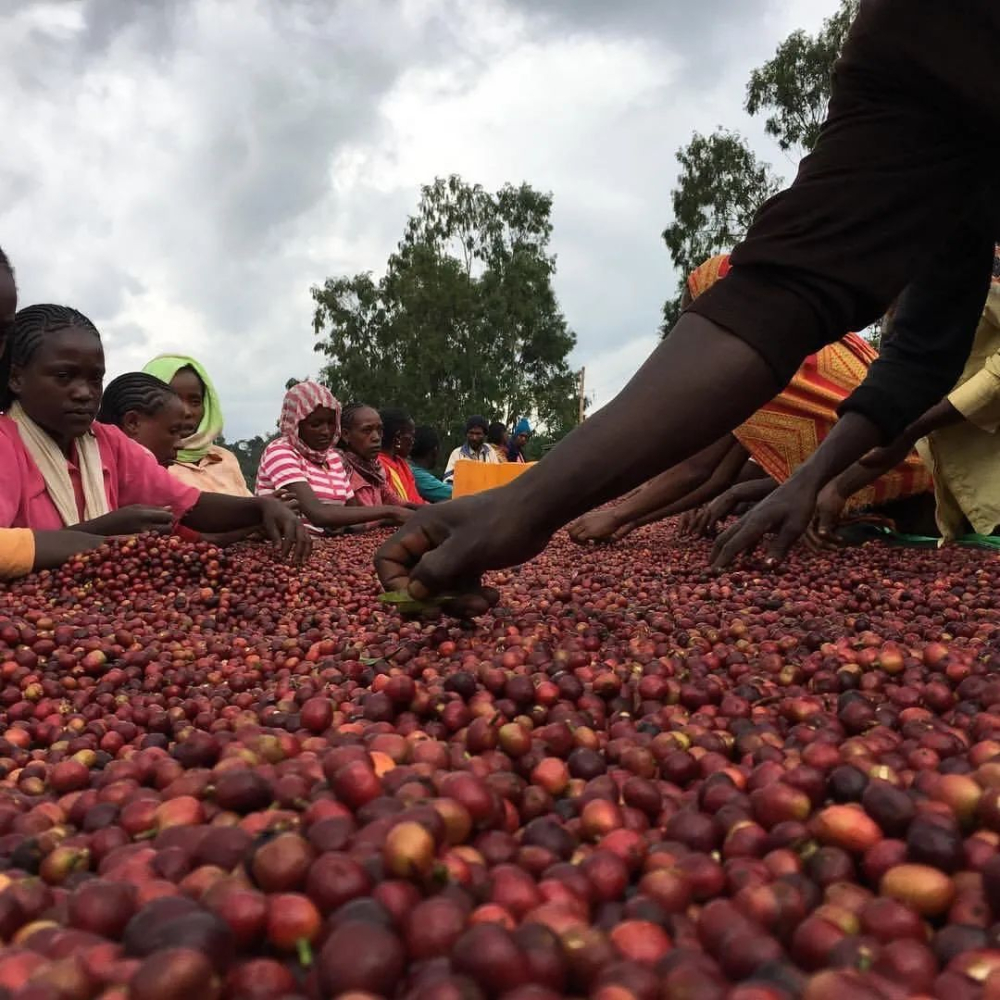
"Yegashafi Yirgacheffe" refers to a small town northwest of Sidamo / Sidamo, Ethiopia. With mountains and lakes, 1700-2100 meters above sea level, it is one of the highest coffee-producing areas in Ethiopia. It originally belonged to Sidamo, but later, because of its unique flavor and growing fame, it simply became independent from the big producing area of Sidamo and became an exclusive producing area of Yega Xuefei. The town is foggy, like spring all year round, with a gentle breeze, cool but not hot, rain but not damp, and no cold damage in winter, so it is very suitable for the growth of coffee, which is bred with a unique aroma of citrus and flowers.
Because of the variety and complexity of coffee beans in Ethiopia, it is very difficult to sort out and summarize them completely. in addition, in order to protect various wild varieties, the local government decided to pick different coffee beans together and named them "Ethiopian native species Ethopia Heirloom". This is why we always see that Essel beans are not as neat as coffee beans in some areas, but are "of different sizes, fat and thin".
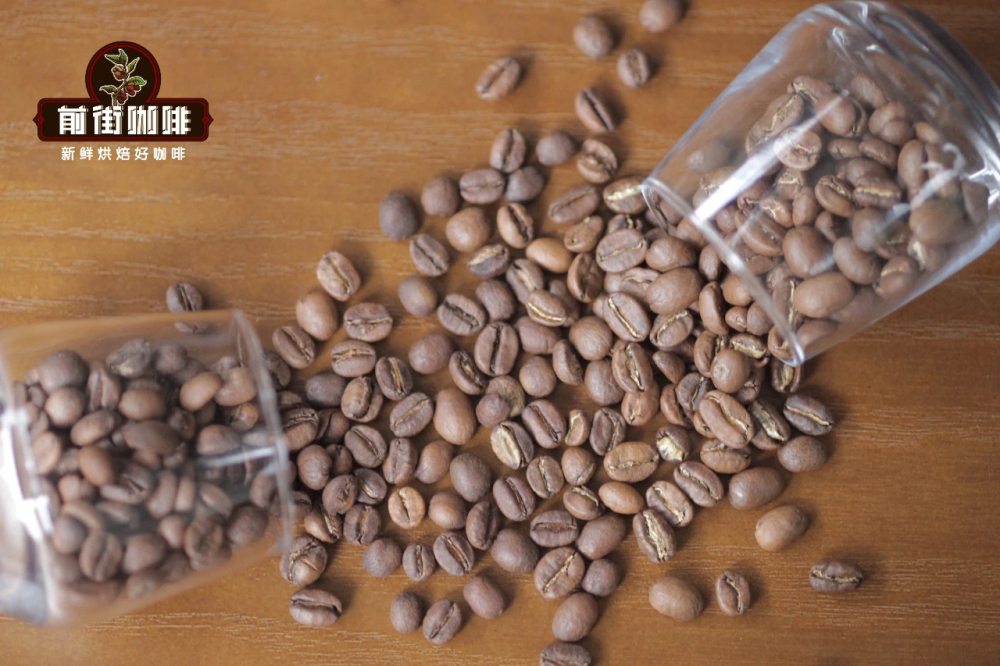
Washing greatly enhances the flavor of Yejia Xuefei.
Ethiopia generally has a high altitude and plenty of sunshine, so it is quite suitable for drying coffee fruits in the sun. The traditional sun treatment is too rough, each coffee farmer can be carried out in his own yard, will be directly spread on the roof, the ground drying, rough methods have brought a lot of unpleasant taste, but also caused uneven coffee quality.
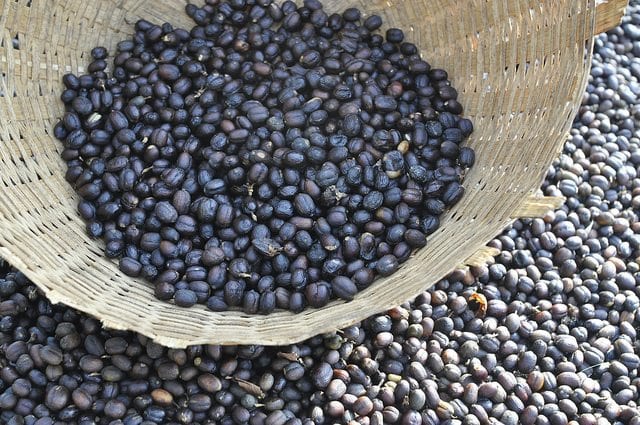
The Ethiopian government introduced more advanced washing technology and related equipment from Central and South America in 1972. Farms that use the washing method must build washing ponds and be able to introduce an endless supply of running water, resulting in higher production costs. During the treatment, put the mellow beans into the pool and pass them back and forth, using the friction of the beans and the power of running water to wash the coffee beans until smooth and clean. Impurities and defective beans are removed in each step, so the quality of raw beans is more uniform, and the final transaction price is higher than that of natural drying coffee.
Washing not only greatly reduces the defect rate of coffee, but also wins Yega Xuefei fresh citrus tone and elegant white flower aroma, with a bright, delicate and clean overall flavor. Although washed coffee has become popular for a time, sun treatment still accounts for the main part of Ethiopian coffee. Unlike in the past, today's sun treatment pays more attention to manual screening and ensuring uniform drying. The Fruit Ding Cooperative coffee beans on the Qianjie bean list are Yega Chuefei, which is treated with classic washing, and another red cherry coffee bean is Yega Xuefei, which is treated with exquisite sun treatment, which has a fuller sense of fermentation and tropical fruit flavor.
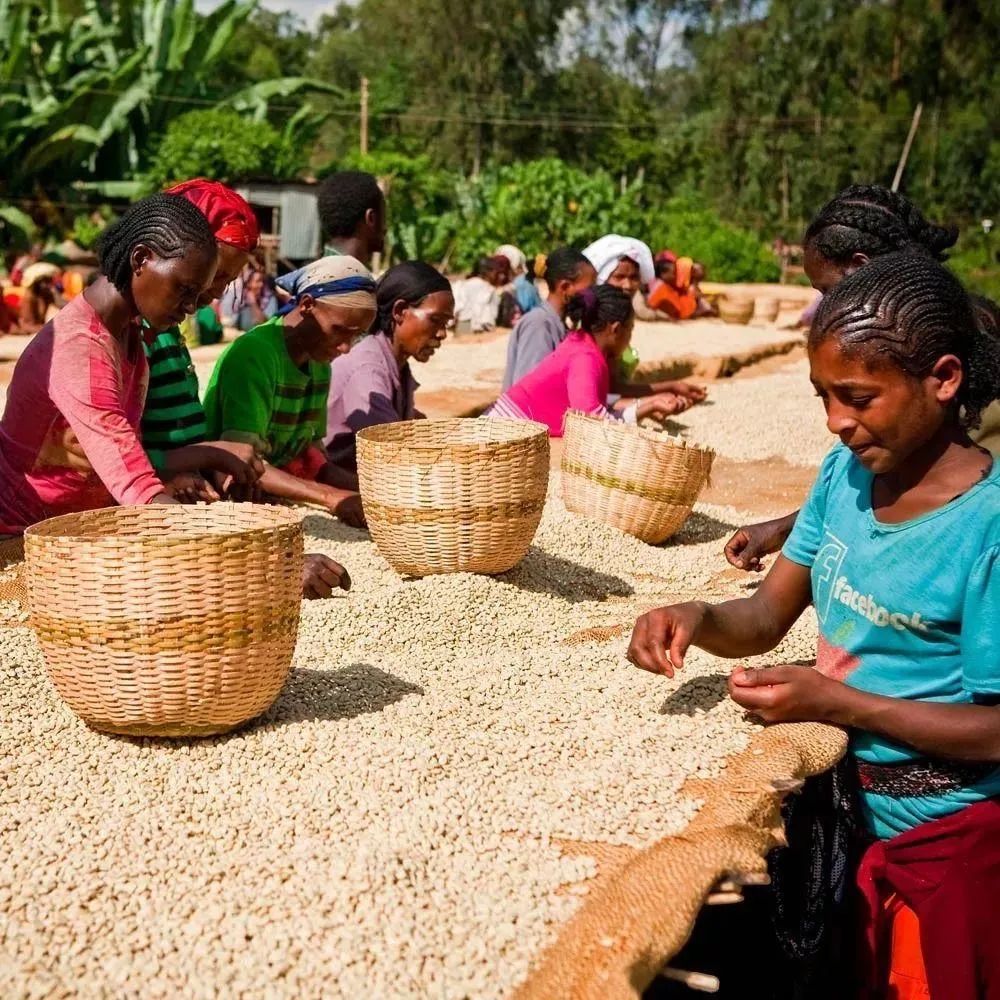
Medium and shallow baking retains more floral and fruity flavors of Yega Xuefei.
On baking, Qianjie takes into account that Yega Xuefei should show acid as the main flavor direction, so medium and shallow baking is adopted. Washed Yega Chuefei Fruit Ding Cooperative Coffee beans use light roasting to retain more bright acidity and white flower aroma, while Sun Yega Chuefei Red Cherry Coffee beans are roasted in medium light, showing full sweet and sour berries. Before each launch of a coffee bean in Qianjie, at least one cup test will be carried out. Under the same standard, the cup test can give us a more objective sense of the advantages and disadvantages of coffee.
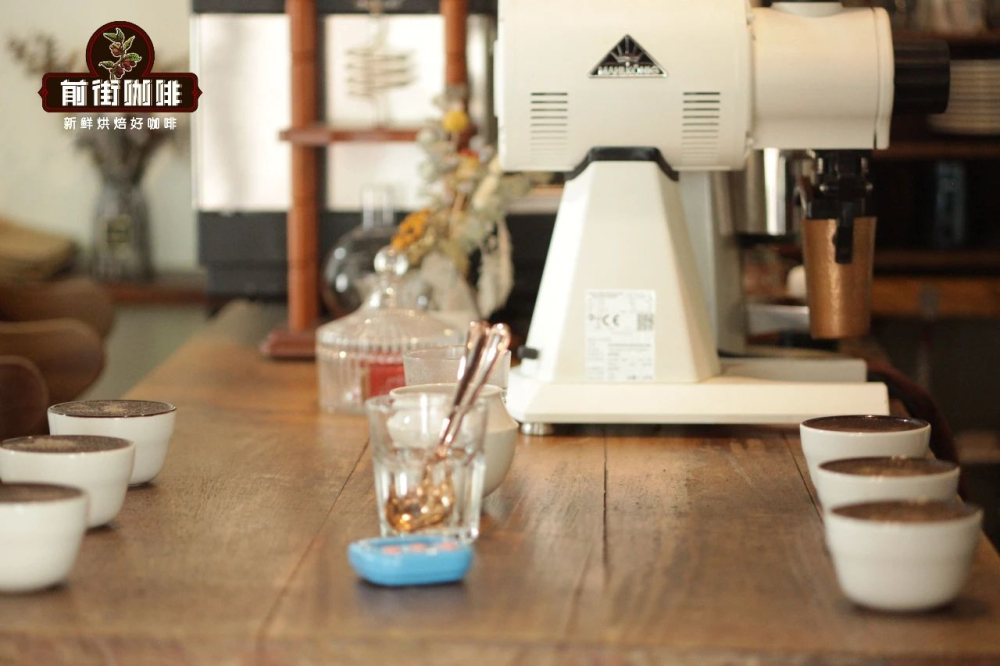
The cup flavor of washed fruit dingding cooperative coffee: dry aroma with fresh passion fruit, citrus, berry sour aromas. Wet aroma is the acidity of citrus, berries, imported citrus, sweet berries, almonds, tea, with honey sweetness in the finish. Alcohol thickness is low, acidity is bright, clean and refreshing.
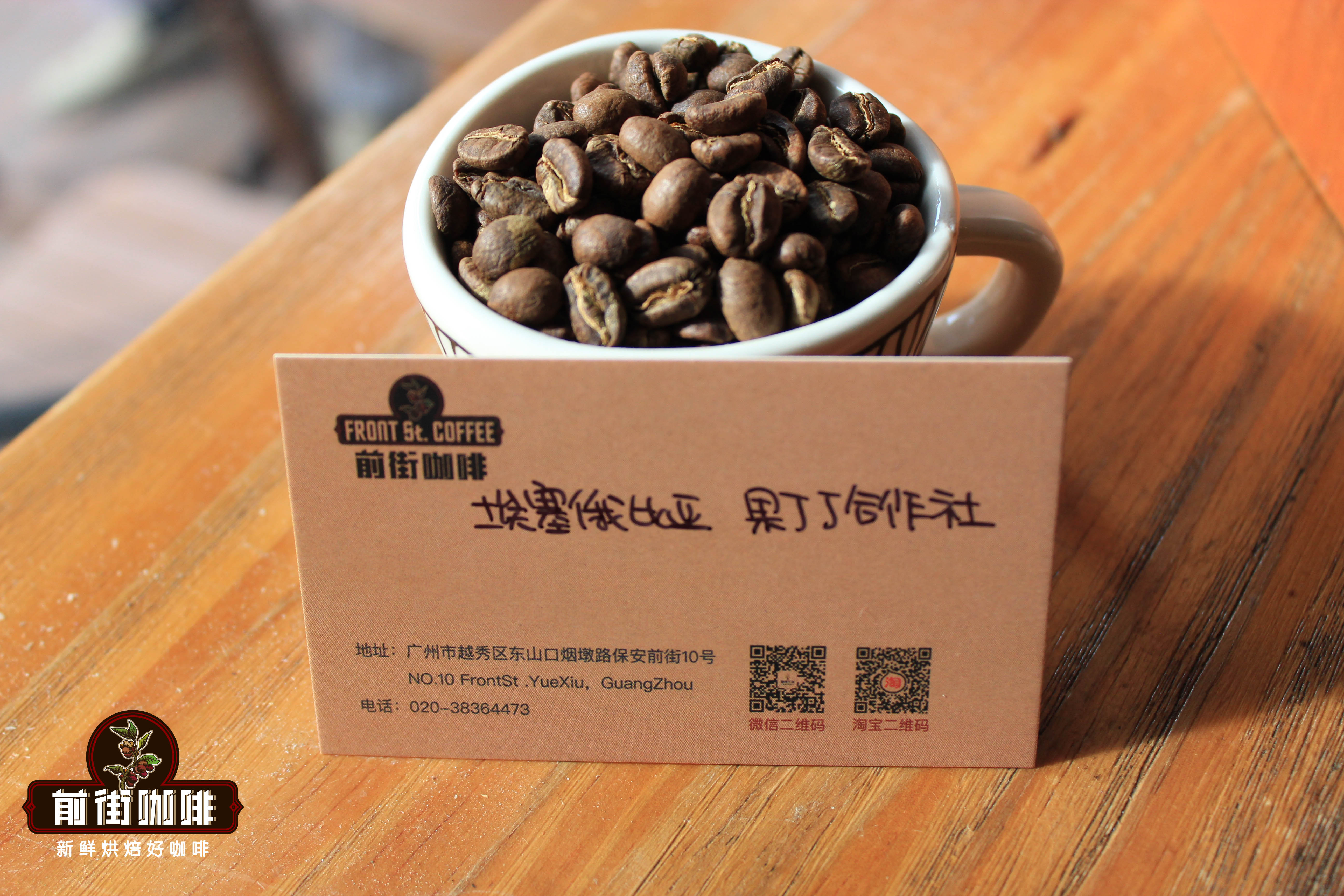
Sun red cherry coffee cup test flavor: dry aroma shows full sweet and sour berries, sucking at different temperatures, soft sweet and sour berries, ripe fruit fermentation, obvious honey sweetness and black tea tail, smooth taste.
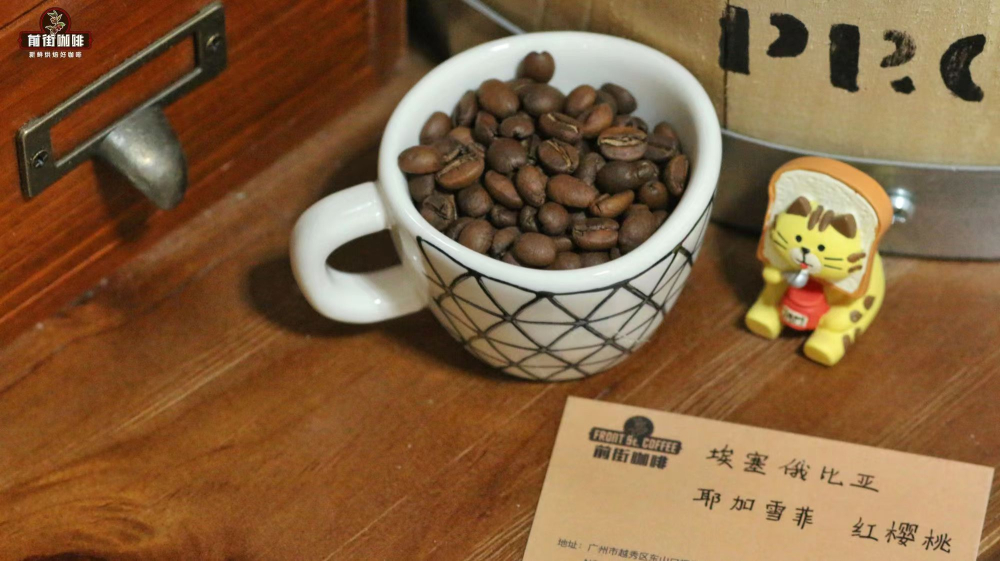
The suggestion of cooking in Qianjie
After buying Qianjie coffee beans, some guests consult Qianjie related cooking suggestions. In fact, there are cooking parameters on the label of each bag of coffee beans in Qianjie. Here Qianjie talks about Yega Xuefei's extraction ideas according to the standards produced by stores.
Because Yejia Xuefei uses shallow roasting, the quality of coffee beans is hard, which requires high temperature hot water of 92 ℃-93 ℃ to stimulate the aroma of flowers and fruit in the coffee. Grinding degree Qianjie recommended medium fine grinding degree (the pass rate of Chinese standard No. 20 screen is 78%). Too thick to extract mellow substances, brewed coffee will appear thin. Too fine is easy to be over-extracted at high water temperature, and the coffee brewed is prone to bitterness.
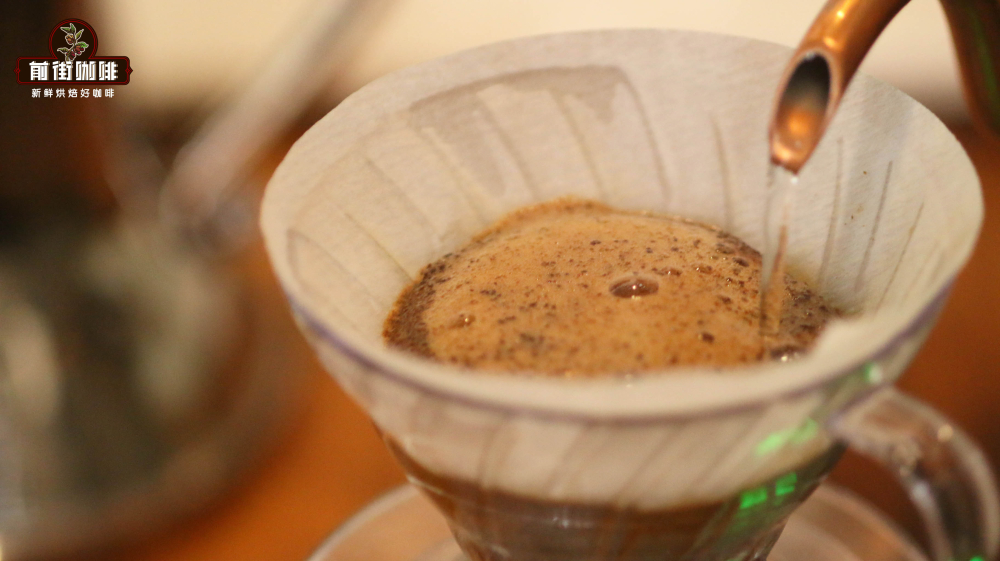
In the process of cup testing, Qianjie noticed that the bean showed different flavors at different temperatures, so three-stage extraction was used to make different flavor substances show better when the powder layer warms up. In order to highlight the fresh and charming aroma of washing Yega, the front street uses a V60 filter cup for cooking. The spiral design of the filter cup allows coffee powder to exhaust better and maximize the volatilization and dissolution of sour substances.
In terms of brewing ratio, Qianjie thinks that either one, 15, or 16 is OK. If you want a stronger taste, use 1:15. If you want to feel the sweetness of the flowers more clearly, you can use 1:16 to spread the flavor.
Filter cup: V60 water temperature: 92-93 degrees Celsius powder: 15g powder-water ratio: 1:15 Grinding degree: fine sugar size (No. 20 sieve bowl sieve powder to 78%)
Three-stage water injection: wet the powder bed with twice as much water as coffee powder to form a drum and steam for 30s, then fill the small water from the inside to the outer circle to 125g, wait for the powder bed to drop to half of the filter cup, and continue to inject the same fine water into the third section to 225g, until all the coffee liquid has been filtered and remove the filter cup for about 2 minutes.

Professional coffee knowledge exchange more coffee bean information please follow the coffee workshop (Wechat official account cafe_style)
For more boutique coffee beans, please add private Qianjie coffee on Wechat. WeChat account: qjcoffeex
Important Notice :
前街咖啡 FrontStreet Coffee has moved to new addredd:
FrontStreet Coffee Address: 315,Donghua East Road,GuangZhou
Tel:020 38364473
- Prev
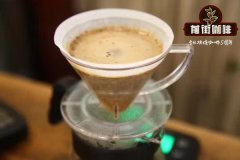
What's so special about African Ethiopian coffee? what's the best coffee in Ethiopia?
Professional coffee knowledge exchange more coffee bean information please follow the coffee workshop (Wechat official account cafe_style) about Ethiopian coffee Ethiopia is an underdeveloped country located in northeast Africa, but this country is a world-famous coffee producer. Ethiopia has the most diverse coffee ecosystem in the world (forest coffee, semi-forest coffee, pastoral).
- Next
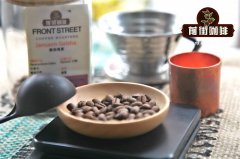
What are the characteristics of Sidamo coffee beans? Sun-dried Sidamo taste profile
Professional coffee knowledge exchange More coffee bean information Please pay attention to coffee workshop (Weixin Official Accounts cafe_style) END
Related
- Beginners will see the "Coffee pull flower" guide!
- What is the difference between ice blog purified milk and ordinary milk coffee?
- Why is the Philippines the largest producer of crops in Liberia?
- For coffee extraction, should the fine powder be retained?
- How does extracted espresso fill pressed powder? How much strength does it take to press the powder?
- How to make jasmine cold extract coffee? Is the jasmine + latte good?
- Will this little toy really make the coffee taste better? How does Lily Drip affect coffee extraction?
- Will the action of slapping the filter cup also affect coffee extraction?
- What's the difference between powder-to-water ratio and powder-to-liquid ratio?
- What is the Ethiopian local species? What does it have to do with Heirloom native species?

